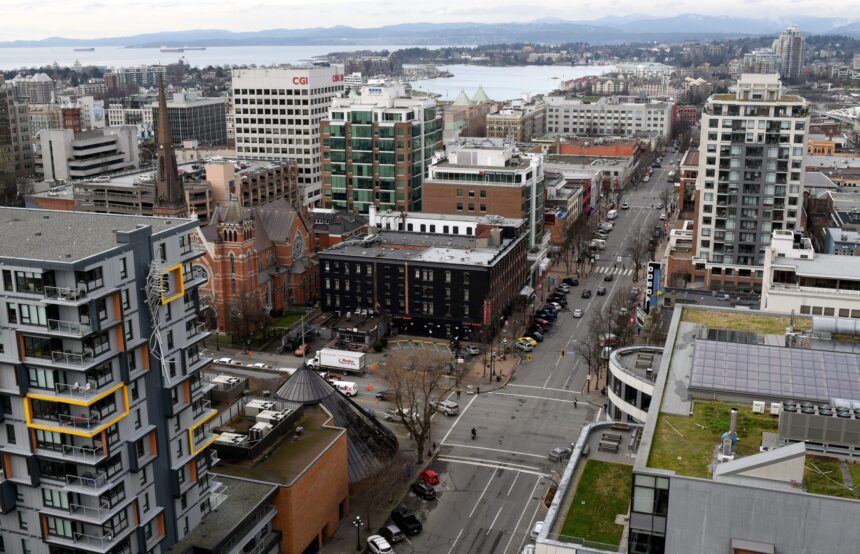I stepped into Island Health’s Victoria headquarters on a drizzly Monday morning last week, the kind of persistent coastal rain that seeps into your bones. The modern glass building felt eerily quiet for a weekday. “Everything’s different now,” whispered a veteran administrator I’ve known for years, glancing nervously at the empty corner offices where executives once worked.
This scene would have been unimaginable just months ago. Island Health, one of British Columbia’s five regional health authorities serving over 850,000 Vancouver Island residents, has eliminated nearly a third of its executive leadership team – including three vice presidents and seven directors – in what officials describe as “necessary restructuring” amid mounting financial pressures.
“We’re facing an unprecedented fiscal reality,” explained James Hanson, Island Health’s President and CEO, during our interview in his minimalist office overlooking the inner harbour. “The decision to reduce our executive team wasn’t made lightly, but it reflects our commitment to protecting frontline care while addressing our budget constraints.”
Those constraints are significant. According to financial documents obtained through a freedom of information request, Island Health is grappling with a projected $87 million deficit for the 2025-2026 fiscal year – the largest in its history. The executive restructuring is expected to save approximately $5.2 million annually.
For Dr. Meena Dawar, a family physician who splits her time between clinical practice and health policy advocacy in Nanaimo, the executive cuts represent a deeper shift in healthcare priorities.
“We’ve spent decades building increasingly top-heavy administrative structures while frontline providers burn out,” Dr. Dawar told me during a coffee break between patient appointments. “Maybe this correction was inevitable, but the question is whether the resources will actually flow to where they’re needed most.”
That question weighs heavily on the minds of healthcare workers across Vancouver Island. Nursing shortages have reached critical levels at several regional hospitals, with Victoria General Hospital reporting vacancy rates as high as 28% in some departments, according to BC Nurses’ Union data. Meanwhile, wait times for non-urgent surgeries have increased by 17% since 2023.
The layoffs arrive amid a period of fiscal restraint throughout British Columbia’s healthcare system. Last month, the province’s Health Minister announced plans to reduce overall administrative costs by 15% across all health authorities – part of a broader strategy to address the province’s $3.8 billion deficit while maintaining essential services.
“When budgets tighten, we need to look at where we can find efficiencies without compromising care,” explained Jessica Liu, health policy researcher at the University of Victoria. “Administrative costs in Canadian healthcare have grown at nearly twice the rate of clinical services over the past decade. The question isn’t whether to trim administration, but how to do it strategically.”
Inside Island Health, the restructuring has created a climate of uncertainty. Three employees who requested anonymity described overwhelmed remaining executives now managing expanded portfolios and middle managers fearful of additional cuts.
“People are wondering if this is just the beginning,” one senior program manager told me. “There’s a sense that more changes are coming, and everyone’s trying to demonstrate their value.”
For T’Sou-ke Nation Elder Shirley Alphonse, who serves on Island Health’s Indigenous Health Council, the restructuring raises concerns about commitments to cultural safety and Indigenous-led health initiatives.
“We’ve worked hard to build relationships with certain leaders who understood our communities and histories,” Alphonse explained as we walked along the shoreline near her community west of Victoria. “When those people disappear overnight, we wonder if the progress we’ve made will disappear too.”
Island Health officials insist their commitment to Indigenous health remains unshaken. In a statement, the authority emphasized that their Indigenous Health team would be “protected from any reductions” and that cultural safety training would continue for all staff.
The executive cuts follow similar moves at Fraser Health earlier this year, where eight senior positions were eliminated in March. Health authorities in Alberta and Ontario have undertaken comparable restructuring efforts since 2024, according to the Canadian Institute for Health Information.
While the immediate impact falls on those who lost their positions, the ripple effects will be felt throughout Vancouver Island’s healthcare system. Emergency room physician Dr. James Wong at Campbell River Hospital believes the true test will be whether streamlining at the top translates to better conditions on the front lines.
“Every shift, I’m treating patients in hallways because we don’t have enough beds or staff,” Dr. Wong said during our phone conversation between his overnight shifts. “If cutting a few executive salaries means we can hire more nurses or keep rural clinics open, that’s positive. But if it’s just shuffling the deck chairs while core services continue to erode, then we’ve solved nothing.”
For healthcare advocate and former Island Health board member Maria Santana, the restructuring represents both challenge and opportunity.
“Health authorities were created to be nimble and responsive to local needs,” Santana reminded me as we toured a community health center in Courtenay that she helped establish. “Somewhere along the way, many became rigid bureaucracies. Perhaps this moment forces us to remember their original purpose.”
As Island Health navigates this transition, communities across Vancouver Island watch closely. Will the resources freed from executive salaries flow to understaffed emergency rooms, rural clinics struggling to stay open, or mental health services with months-long waiting lists? The answer will determine whether this restructuring is remembered as necessary adaptation or harmful austerity.
Walking back to my car in the hospital parking lot, I noticed a hand-lettered sign in a staff member’s window: “Less meetings, more healing.” Perhaps that sentiment, more than any organizational chart, captures the moment’s essential truth.






